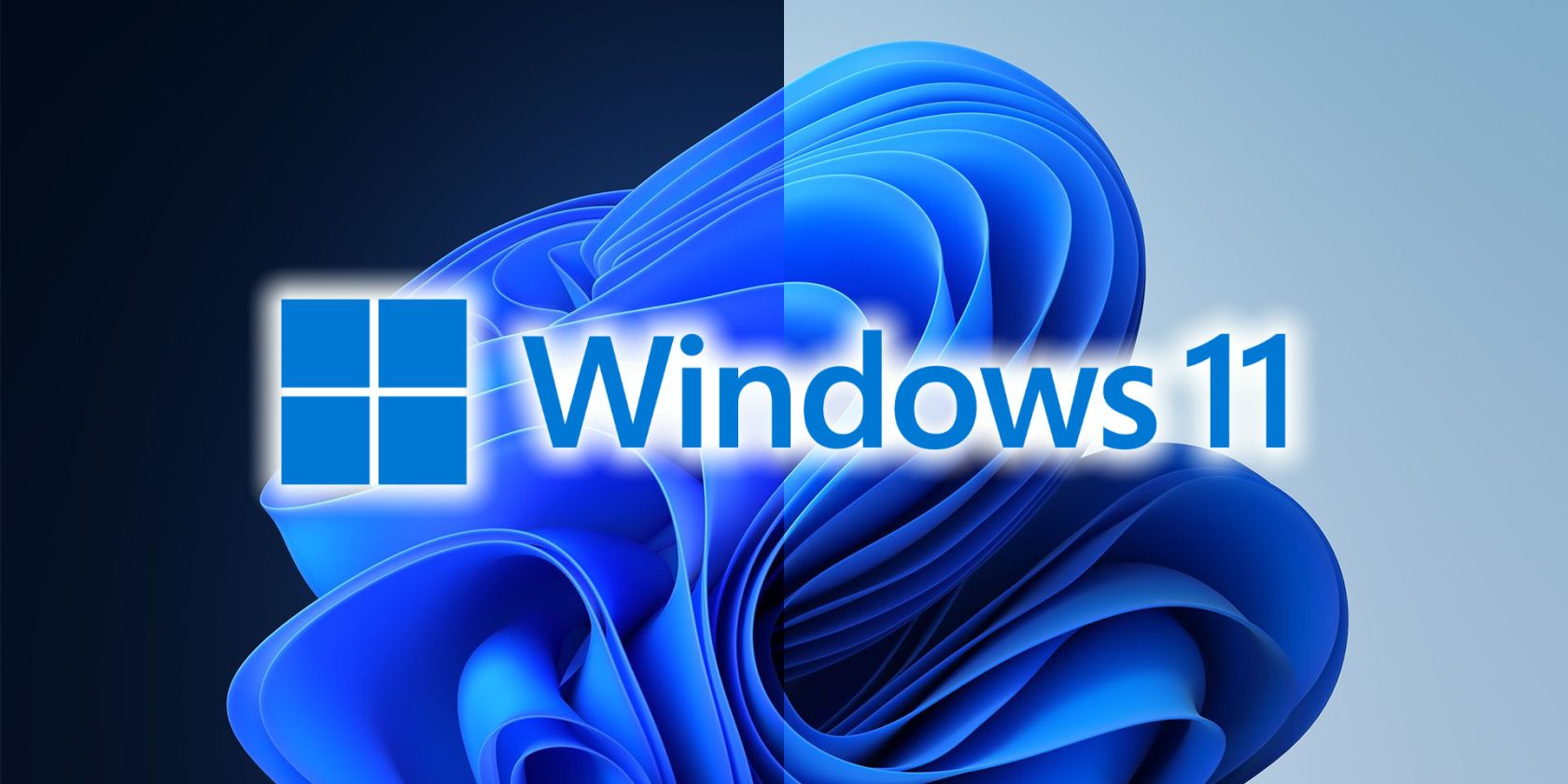
Top-Rated Television Sets : A Buyer's Guide

Top-Rated Television Sets : A Buyer’s Guide
Read update
- We’ve reviewed our recommendations and these are still the best TVs you can buy.
From OLED to QLED, quantum dot technology to HDR support, there’s a lot you need to know before settling on a new television set. We cut through the chaff to get you the TV you need.
UPDATE: 11/21/2023
We’ve reviewed our recommendations and these are still the best TVs you can buy.
LG G3
Best TV Overall
See at Amazon
Hisense U6K Series
Best Budget TV
See at Amazon
Samsung QN900B
Best 8K TV
$2879 at Amazon
LG C3 OLED
Best Gaming TV
See at Amazon
Sony A95K
Best TV for Movies
$3999 at Amazon
Roku Plus Series
Best Roku TV
See at Best Buy
TCL QM8 QLED TV
Best LED TV
$1495 at Amazon
What to Look for in a TV in 2023
It’s the perfect time to buy a TV. While other entertainment products like game consoles and gaming PCs are getting more and more expensive, televisions instead follow the trend of falling prices year after year. What’s more, image quality has never been better, so you can get a fantastic 4K (or better! ) TV for a great price. But, there’s a lot to consider when choosing a new TV set.
Currently, two dominant display technologies are available on the market—LED-lit LCD TVs and OLED displays. These differing approaches to producing an image have their own pros and cons, and you should be sure you understand the difference between them before you buy.
Standard LED-lit LCD TVs use a backlight to shine through the display “stack” to produce an image. To produce a black image, the backlight must be “blocked” by the thin-film substrate (TFT) layer, often resulting in washed-out blacks and a poor contrast ratio .
The newest LED-LCD TVs use dimming algorithms to produce deeper blacks by turning off the backlight in darker areas. This can result in black crush , where subtle details are lost, or ghosting, where the LED “zones” can be seen behind the content.
By comparison, OLED is self-emissive, which means reproducing black is a simple case of turning the pixels off. This allows OLED displays to have a striking, theoretically infinite contrast ratio. This generally leads to superior image quality, especially in a dark room where blacks stand out.
While OLED technology is great in a dark environment, LED TVs are better in brightly lit rooms since these models can get brighter. OLED sets are also susceptible to permanent image retention or “burn-in,” limiting how bright they can get. They’re also more expensive than their LCD counterparts, but the price has fallen significantly over the last five years.
How you intend to use the TV will dictate whether you need gaming features like HDMI 2.1 support. Movie lovers may prioritize motion handling and good HDR support and may benefit from features like Filmmaker Mode . We recommend reading our full guide to buying a TV and checking out reviews on websites like RTINGS before you buy.
| How Did We Research | ||
|---|---|---|
| Models Evaluated | Hours Researched | Reviews Analyzed |
| 45 | 31 | 62 |
How-To Geek’s product recommendations come from the same team of experts that have helped people fix their gadgets over one billion times. We only recommend the best products based on our research and expertise. We never accept payment to endorse or review a product. Read More »
Best TV Overall: LG G3
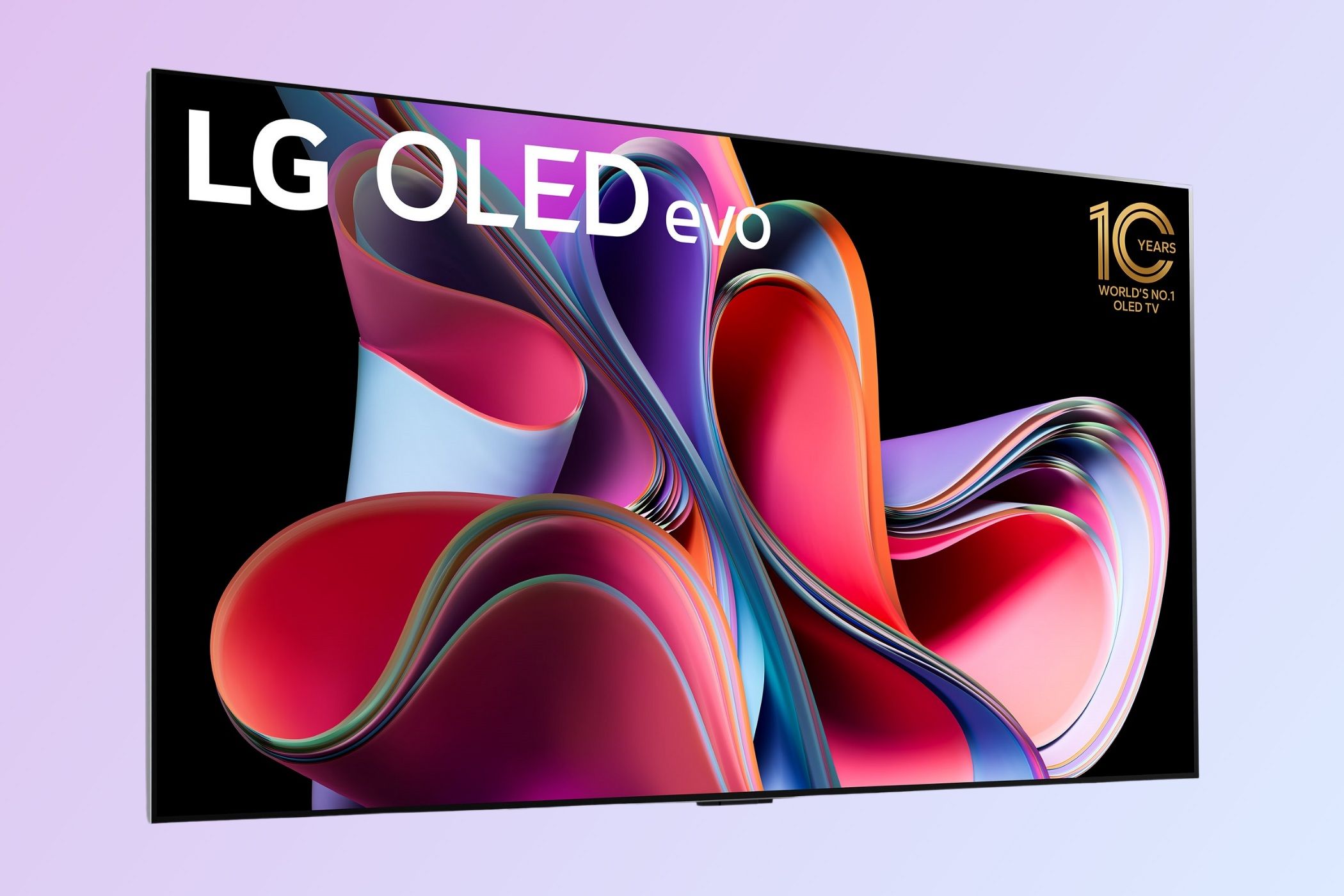
LG
| Pros | Cons |
|---|---|
| Stunning picture quality | No HDR10+ |
| High peak brightness | Expensive |
| 120Hz refresh rate and VRR support | No stand in the box |
| Four HDMI 2.1 ports |
Part of LG’s 2023 line, the G3 is a fantastic 4K TV that delivers stunning picture quality thanks to its OLED panel and has impressive gaming chops, among other features.
One of the highlights of the LG G3 is its Micro Lens Array (MLA) technology that allows the television to deliver comparable peak brightness to QD-OLED , which had earlier pipped LG’s previous W-OLED panel in the brightness department. But the presence of MLA means the LG G3 can offer north of 1400 nits in HDR. This helps the TV produce vibrant, lifelike images alongside the panel’s inky blacks. You’ll have a great experience watching movies, TV shows, or playing video games.
The LG G3 also supports Dolby Vision and HDR10. But like LG’s other TVs, HDR10+ support is missing. However, it’s not as popular as Dolby Vision among the dynamic HDR formats. So you won’t be missing out on much.
In terms of gaming-related features, the OLED panel supports up to 120Hz refresh rate and is G-Sync Compatible . It also works with AMD FreeSync Premium and HDMI Forum VRR . Plus, you get four HDMI 2.1 ports, including one that works as the eARC port. So you can connect all your consoles and the gaming PC without worrying about losing on the video quality or refresh rate fronts.
Being LG’s flagship 4K TV, the G3 is expensive and may not fit everyone’s budget. Also, as the G3 is designed to be wall-mounted, the company doesn’t ship it with a tabletop stand. So if you want a stand, you’ll have to buy it separately.
If you want to save a bit of cash, consider the LG C3 , as it has all the same features but lacks the MLA technology.
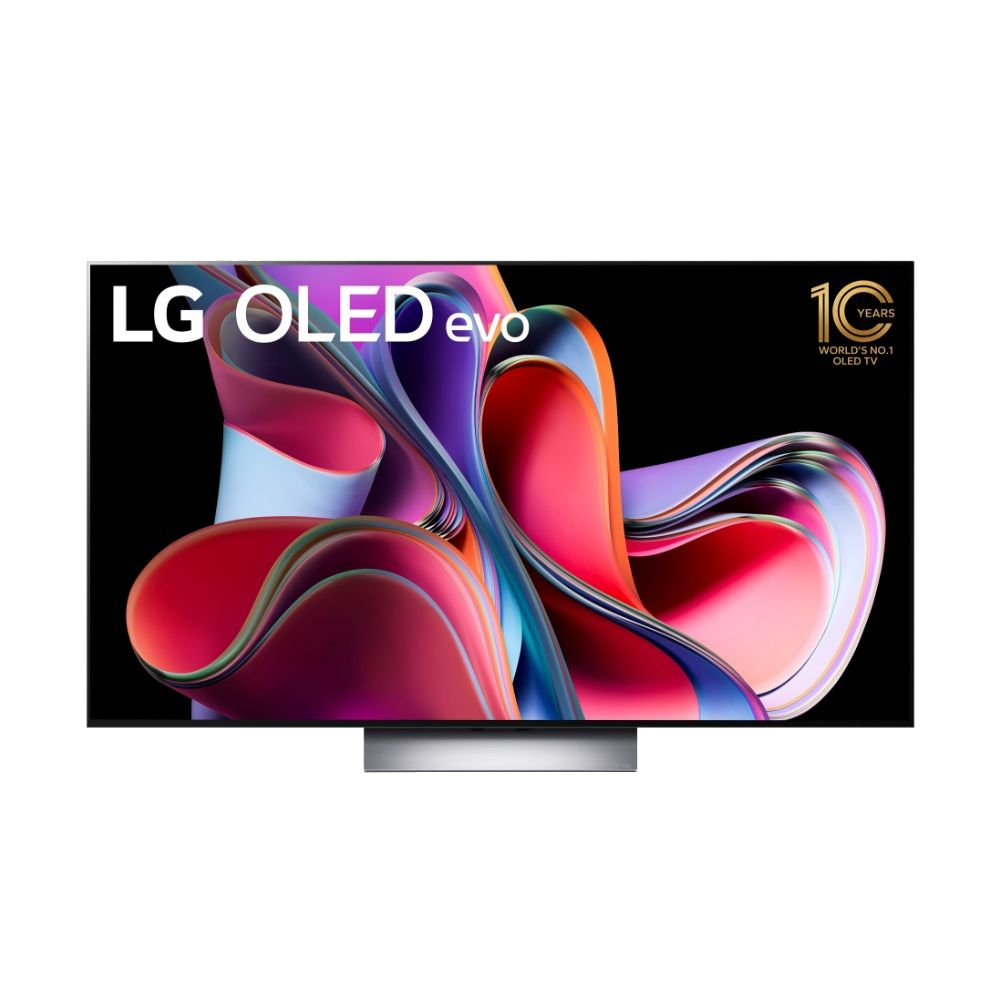
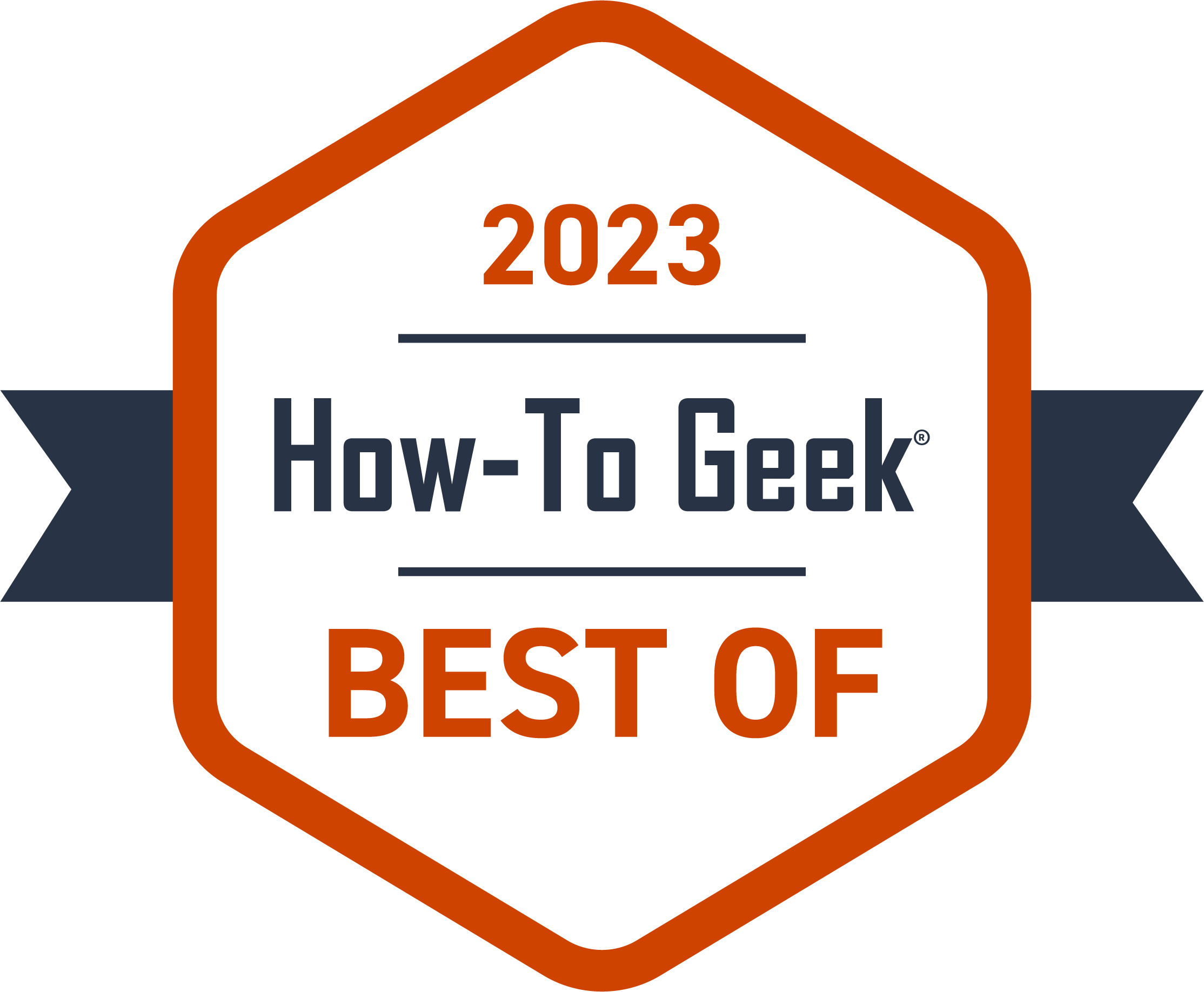
Best TV Overall
LG G3
The LG G3 is an impressive 4K OLED TV that has everything to deliver a great experience. It’s a bit expensive, but you get what you pay for.
See at Amazon See at B&H Photo Video
Best Budget TV: Hisense U6K
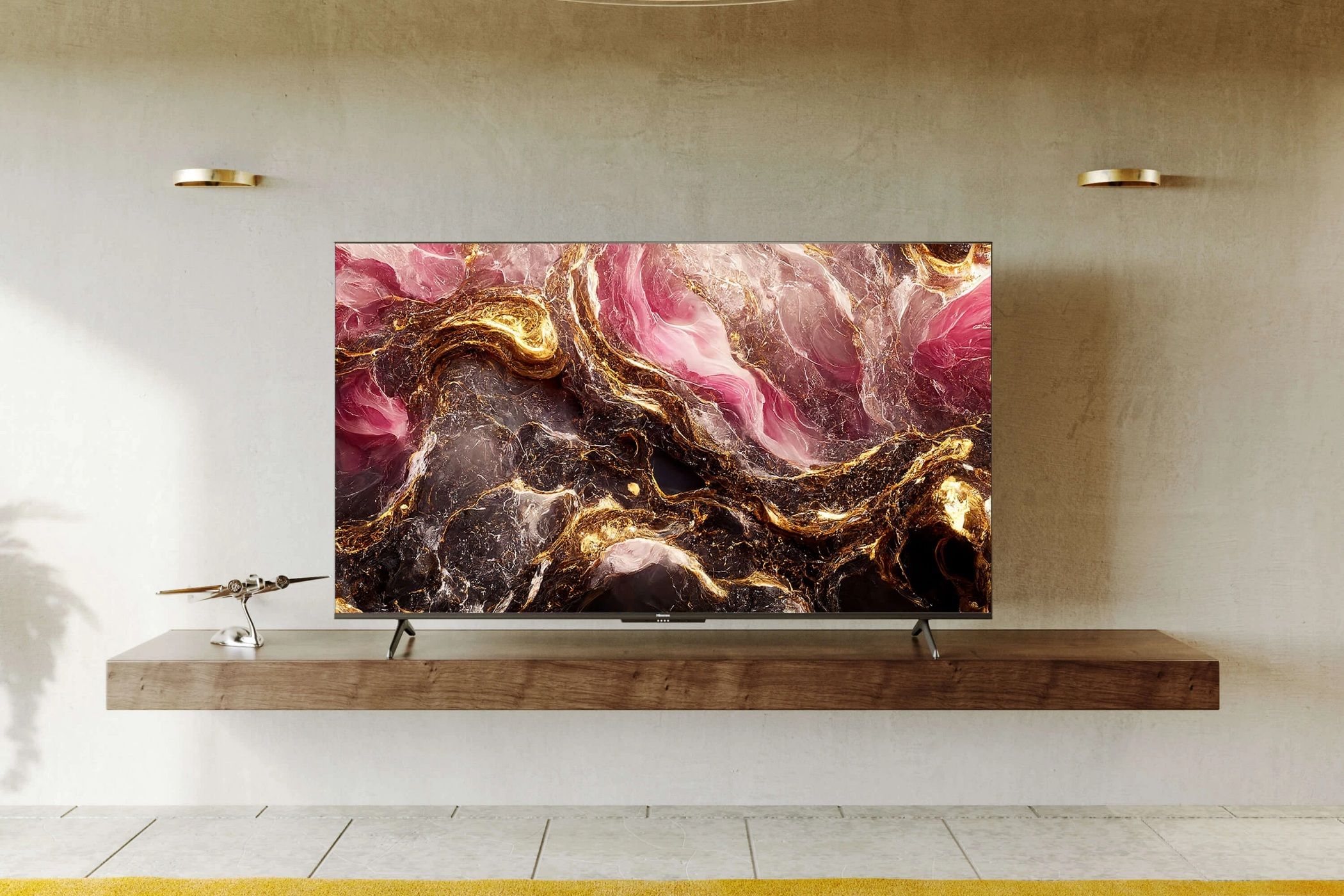
Hisense
| Pros | Cons |
|---|---|
| Excellent contrast and color performance | Narrow viewing angles |
| VRR support | Some color-fringing around objects in motion |
| Dolby Vision and HDR10+ support |
Hisense has quickly established itself as the manufacturer of some of the best value-for-money TVs. So if you have a tight budget, it’s hard to go wrong with the company’s U6K . It packs several improvements over the U6H, which was our previous recommendation for the best budget TV.
One of these improvements is the inclusion of Mini-LED backlighting . While this doesn’t result in exceptionally high peak brightness, you still get 600 nits in HDR. But the one area where the Mini-LED backlight helps is local dimming, and the U6K has much better black levels and contrast ratio than Hisense’s previous U6-series TVs.
Being an ULED-series television, it also uses quantum dot technology, resulting in lifelike and punchy colors. Other features include support for all major HDR formats, including Dolby Vision IQ , Apple AirPlay, and Filmmaker Mode.
The U6K runs on Google TV, which has apps for all major streaming services and is relatively easy to use. The presence of Google TV software means you can also cast content from your phone or computer, or use voice commands to the TV for Google Assistant .
It’s a decent TV for gaming but lacks a 120Hz panel. There is VRR and ALLM, though. You also get four HDMI 2.0 ports, including one eARC port.
Unfortunately, the U6K is not without issues. It suffers from some motion-related color fringing , meaning you may notice some red-colored fringe around objects or people in motion. It’s not a huge issue, though, as it’s often subtle and doesn’t always appear. Moreover, like any other LCD TV with a VA-type panel, it has narrow viewing angles.
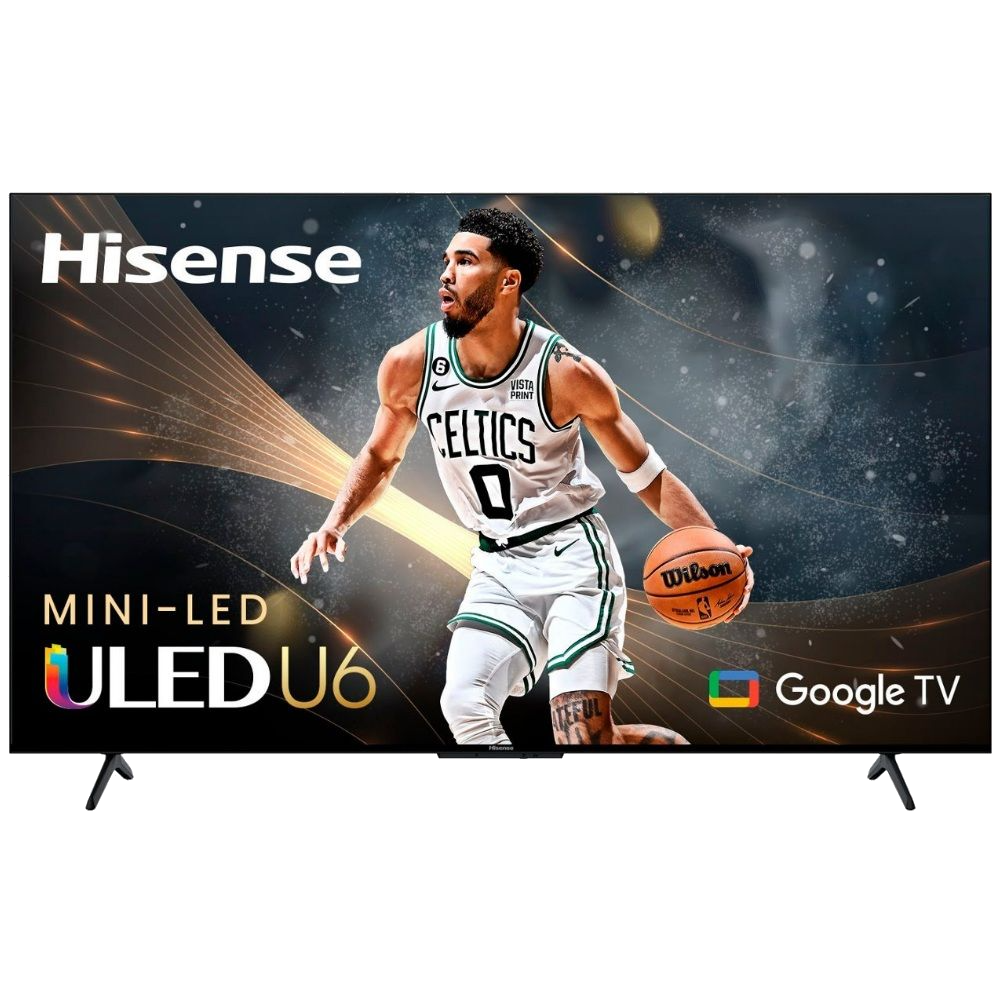

Best Budget TV
Hisense U6K Series
The U6K shines as an affordable television. It has Mini-LED backlighting, quantum dot technology, and support for all major HDR formats.
Best 8K TV: Samsung QN900B
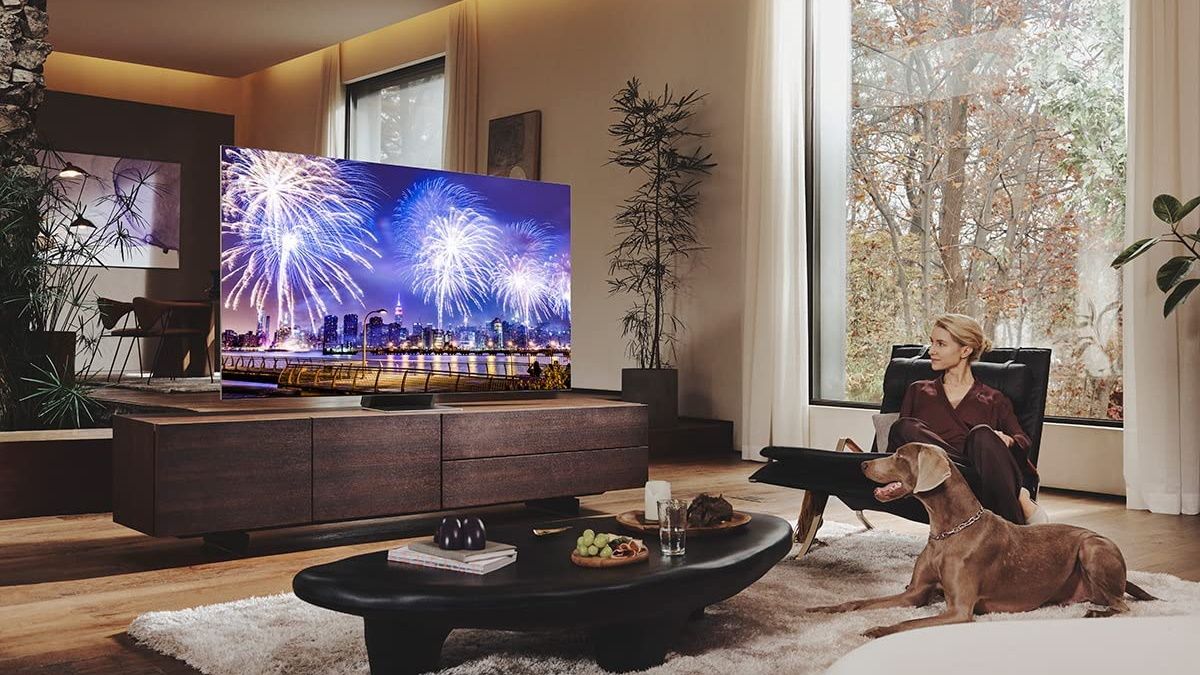
Samsung
| Pros | Cons |
|---|---|
| Fantastic picture quality | Expensive |
| High peak brightness | No Dolby Vision |
| Great viewing angles | |
| Beautiful design | |
| 144Hz native refresh rate |
If you are ready to upgrade to an 8K TV , you can’t go wrong with Samsung QN900B . It’s the company’s flagship model and packs the best of everything Samsung has to offer.
You get quantum dot technology for excellent color fidelity, Mini-LED backlights with full-array local dimming for amazing peak brightness and excellent contrast ratio, and Ultra Viewing Layer for solid viewing angles. Just as importantly, it looks fantastic. There are barely any bezels, and the One Connect Box hides all the cables and ports, barring a cord connecting the TV to the box.
Upscaling is handled by Samsung’s new Neural Quantum Processor 8K, which does a pretty good job, and everything from 480p DVD content to 4K stream is upscaled without issues. This is important because there is hardly any native 8K content , so most of your content will be in 4K or lower resolution.
Tizen OS handles the software duties, and it’s reasonably easy to use and comes with access to all popular streaming apps. To entice gamers, Samsung has also included its Gaming Hub on the TV, which brings access to Xbox Cloud Gaming and NVIDIA GeForce Now. Other gaming features include a native 144Hz refresh rate, VRR support, and ALLM. Plus, you get four HDMI 2.1 bandwidth ports.
While there is a lot to like about the QN900B, it lacks Dolby Vision HDR support and is expensive. The latter is expected, given its feature set and the 8K resolution.
You can buy it in 65-inch , 75-inch , and 85-inch models.
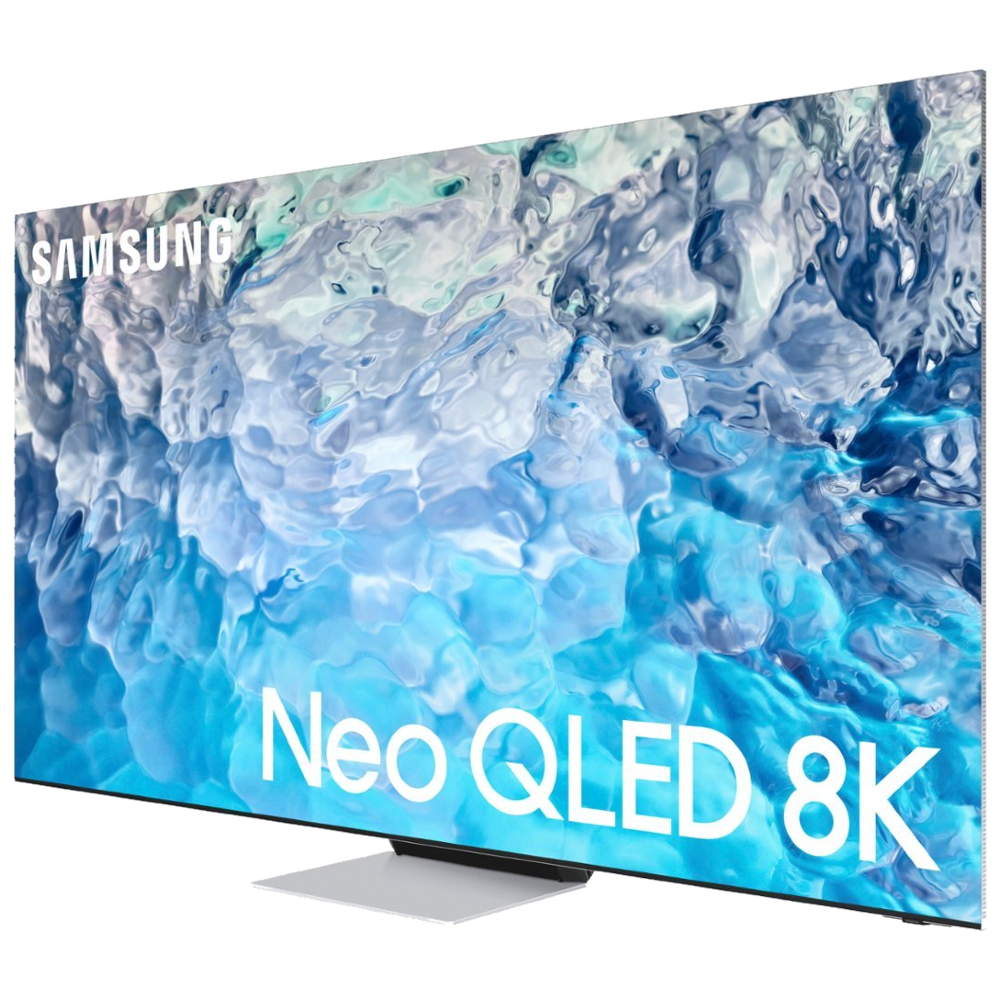

Best 8K TV
Samsung QN900B
Enjoy the bleeding edge of smart TV technology with Samsung’s QN900B. It offers everything from superb picture quality to a premium design.
Best Gaming TV: LG C3
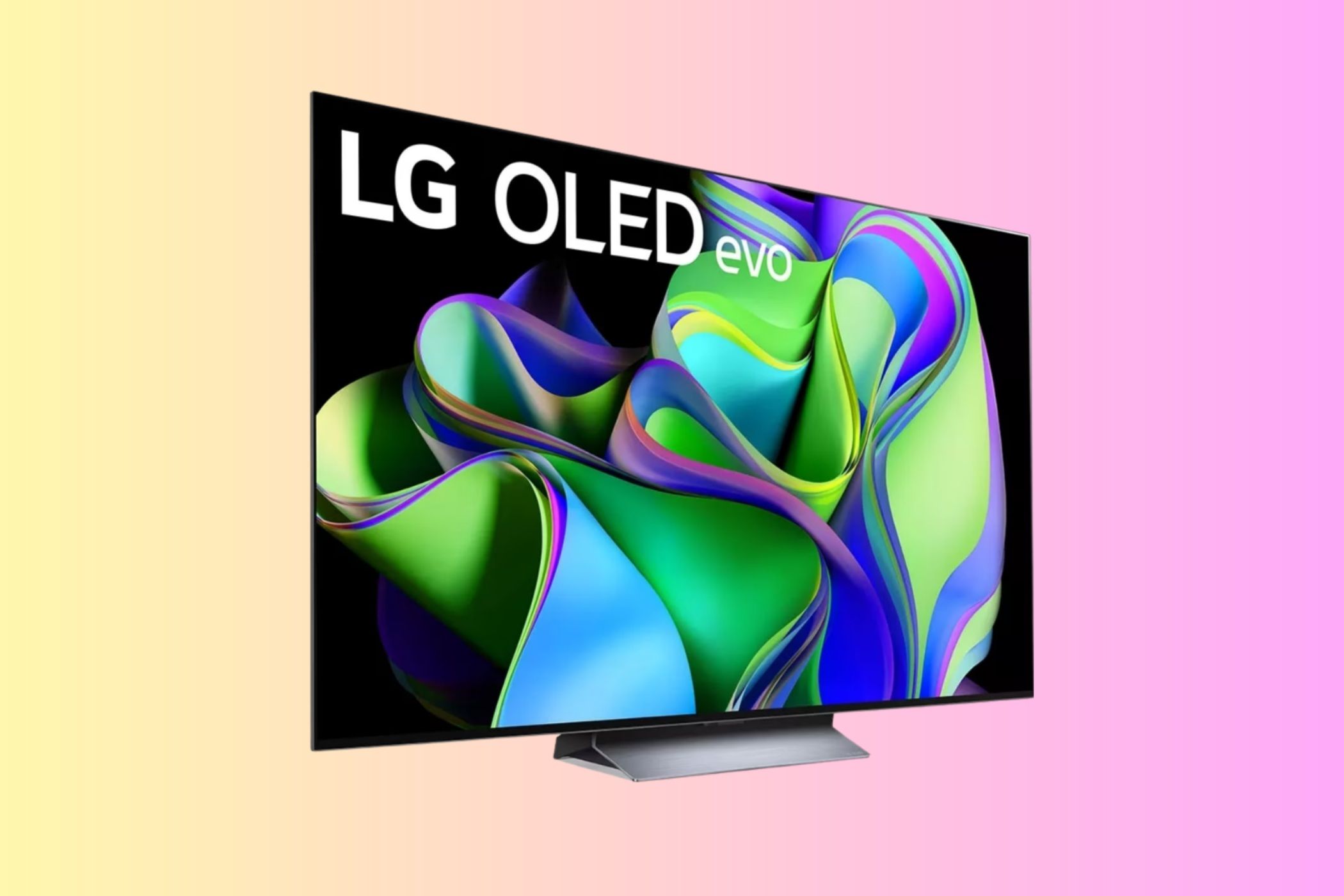
LG
| Pros | Cons |
|---|---|
| Fantastic picture quality | Not the brightest OLED TV |
| 120Hz refresh rate, VRR, ALLM | |
| Four HDMI 2.1 ports | |
| Dolby Vision support |
While our best TV overall pick is perfect for gaming, the LG C3 , which sits just below the flagship G3 in LG’s lineup, is worth considering as it delivers comparable performance at a significantly lower price tag. The only area where the C3 doesn’t reach the G3 levels is the peak brightness, as there is no Micro Lens Array in the C-series model.
Still, the LG C3 produces impressive visuals, thanks to its OLED evo panel , and can reach over 800 nits in HDR. It also has wide viewing angles, a near-infinite contrast ratio, and excellent reflection handling.
Gamers will be happy to know that there is a 120Hz panel on the C3, and it supports all major VRR technologies, including NVIDIA G-Sync and AMD FreeSync. The TV also has a low input lag, fast response time, and auto-low latency mode. Plus, all four HDMI ports on the TV are rated for HDMI 2.1 bandwidth. So you can connect the Xbox Series X, Sony PlayStation 5, and your gaming PC simultaneously and enjoy 4K 120Hz gaming on all.
The LG C3 runs on webOS and has all popular streaming services. But you also get a native app for NVIDIA’s GeForce Now cloud gaming service.
Finally, the LG OLED TV comes in a wide range of sizes from 42 to 83 inches . You’ll have no trouble picking a size to suit your needs.
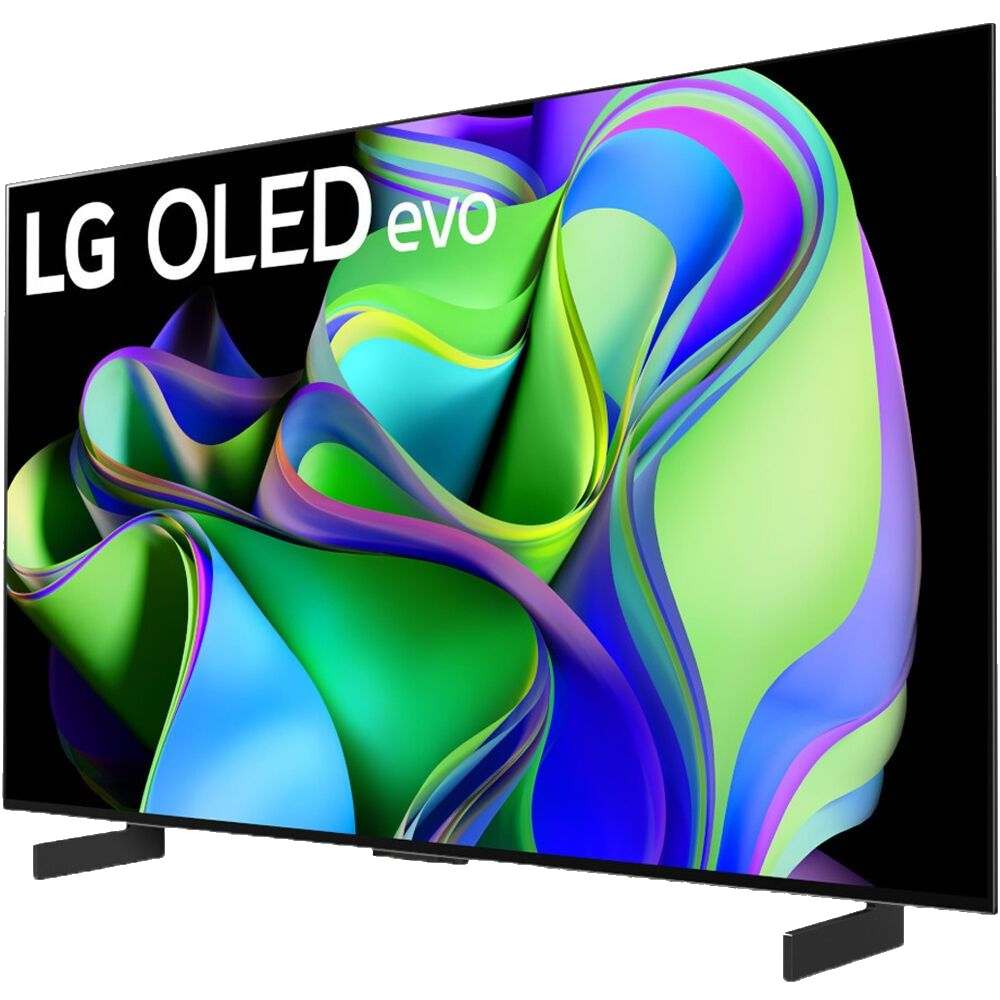

Best Gaming TV
LG C3 OLED
Like its predecessor, the LG C3 is a fantastic TV for gaming. It has all the features you need to get the most out of your gaming console. Moreover, it’s a better value for money than the LG G3.
See at Amazon See at B&H Photo Video
Best TV for Movies: Sony A95K

Sony
| Pros | Cons |
|---|---|
| Outstanding picture quality and image processing | Expensive |
| Dolby Vision HDR support | Just two sizes |
| Two HDMI 2.1 ports, native 120Hz refresh rate, and G-Sync support |
While the Sony A95K has the same QD-OLED panel as some Samsung TVs, the Japanese company’s masterful picture processing sets the Sony TV apart and creates a more realistic-looking image. With Dolby Vision HDR support, which is absent from Samsung models, you get the best television for watching movies.
It isn’t just the processing that is notable about the A95K. It also offers fantastic picture quality with breathtaking colors and inky blacks. In addition, HDR performance is impressive. And while the Samsung S95B can get marginally brighter, the better tone mapping on the A95K results in a more impactful HDR experience.
Additionally, movie lovers will appreciate A95K’s upscaling capabilities, making lower-resolution content watchable on its 4K screen.
Apart from it, this TV is also excellent for playing games. It has a native 120Hz refresh rate and includes two HDMI 2.1 ports. Unfortunately, one of these two ports is also reserved for eARC. You also get NVIDIA G-Sync support, a reasonable input lag, and a fast response time.
Google TV is responsible for software duties and has all popular streaming services. It runs quickly and is relatively easy to use.
Our only gripe with the Sony TV is the lack of sizes. It’s only available in 55-inch and 65-inch models. So if you need an even bigger TV, you’ll have to opt for LG C2 or G2 . Both are outstanding TVs, but the G2 is slightly brighter and has a design more suited to wall mounting.
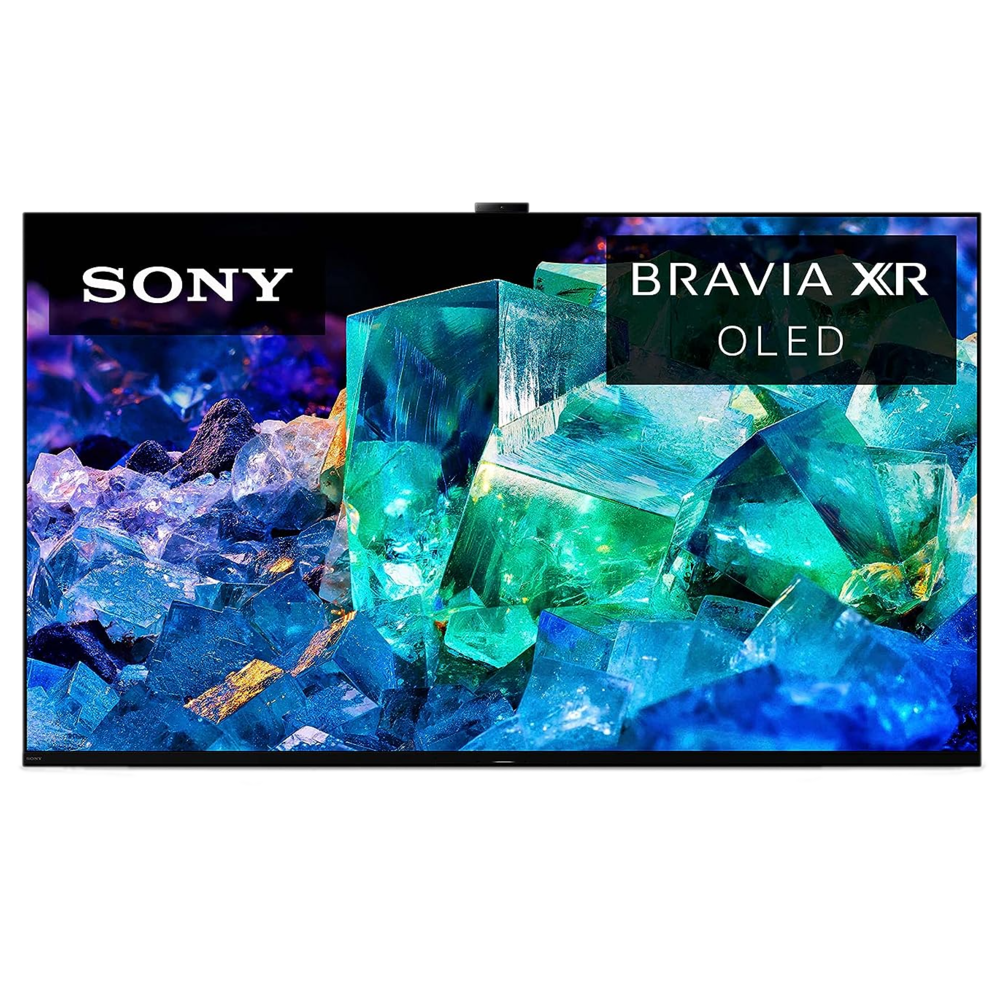

Best TV for Movies
Sony A95K
With the best picture processing in the business and impressive upscaling, Sony’s A95K is perfect for movie lovers. It also supports Dolby Vision HDR.
Best Roku TV: Roku Plus Series
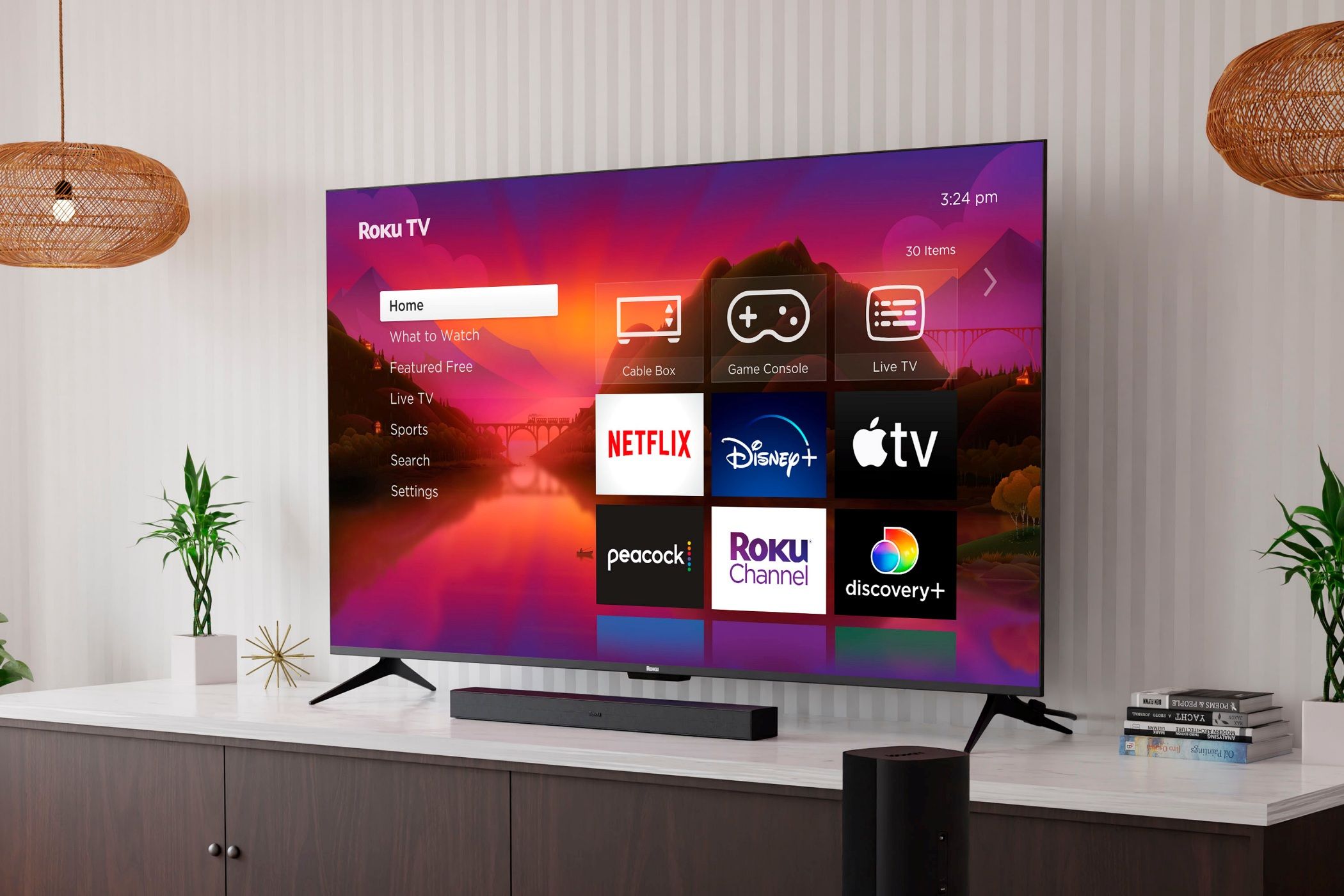
Roku
| Pros | Cons |
|---|---|
| Good picture quality | 60Hz refresh rate |
| Roku OS is easy to use | No HDMI 2.1 ports |
| Reasonable pricing |
After years of producing streaming devices, Roku started selling its own televisions in 2023. And without new Roku TV launches from its partners, the company’s Plus Series models are your best bet if you need a TV with Roku as the operating system.
Despite being Roku’s first attempt at making televisions, the Plus Series is a well-rounded and feature-rich TV that provides punchy visuals as it incorporates quantum dot technology and full-array local dimming.
In terms of HDR, both Dolby Vision and HDR10+ are available. So all the HDR content on Netflix, Prime Video, Disney+, Max, and other sources will look great.
Roku OS is, of course, the highlight of the television. It’s arguably the simplest smart TV operating system on the market. And it has apps for all popular streaming services, and the company’s own channel offers tons of content to enjoy for free. Moreover, you can use AirPlay to stream content from your iPhone, iPad, or MacBook.
While the Roku Plus Series is a decent option for casual gaming, it lacks high-end features like a 120Hz panel or HDMI 2.1 ports.
You can buy the Roku Plus Series in 55-inch , 65-inch , and 75-inch models. But if the TV’s mid-range features don’t entice you, and you want a high-end Roku TV, your best option is to go for a high-end TV with a different smart TV platform, such as LG C3 or G3 , and use a Roku streaming device to get the Roku experience.
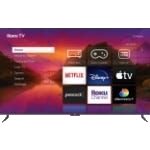

Best Roku TV
Roku Plus Series
Roku Plus Series has a lot going for it, from good visuals to support for all popular HDR formats. It also offers a decent gaming experience but lacks advanced features.
Best LED TV: TCL QM8
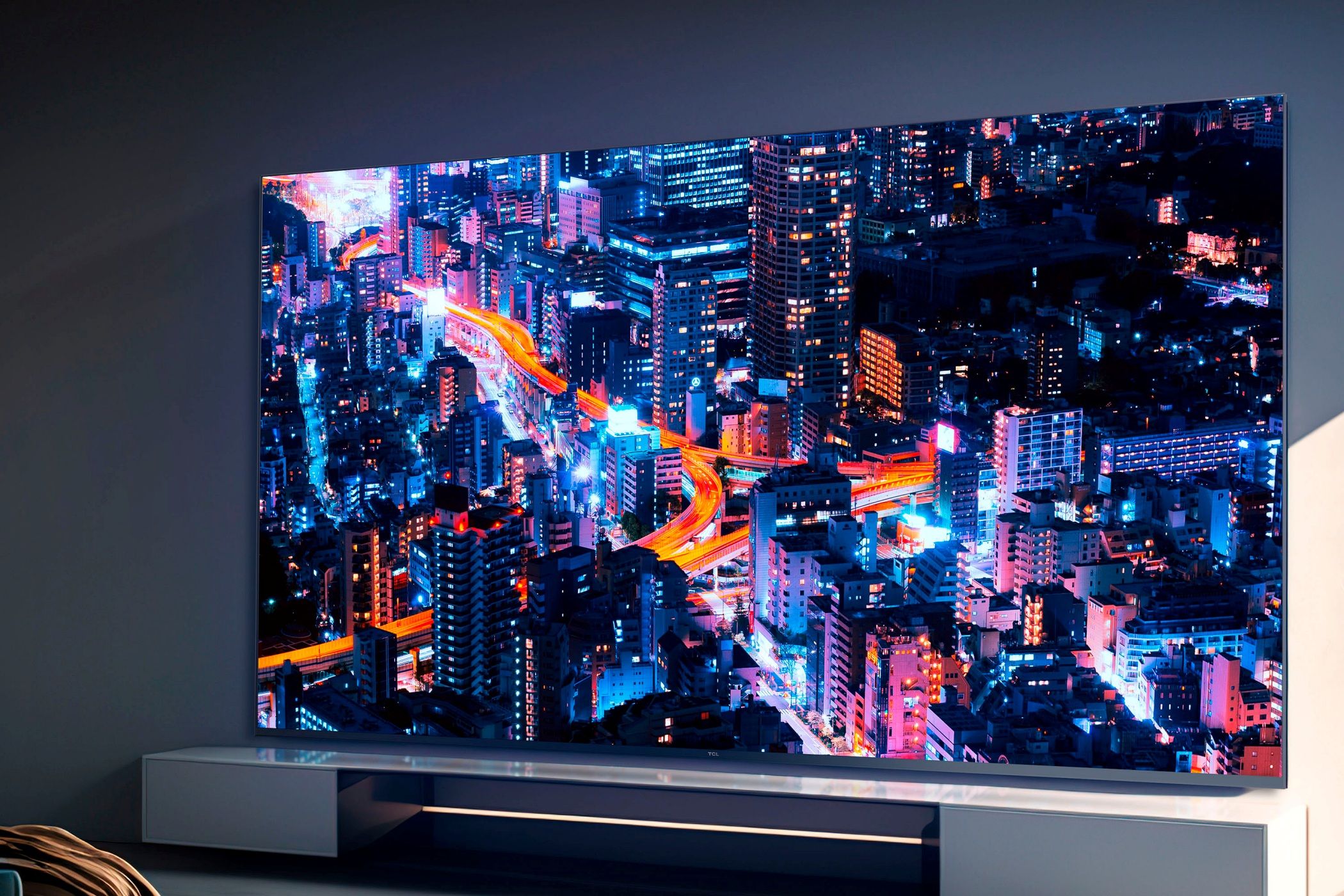
TCL
| Pros | Cons |
|---|---|
| Great visual performance | Poor upscaling |
| Impressive peak brightness | VRR trouble over 120Hz with NVIDIA cards |
| Dolby Vision IQ and HDR10+ support | Narrow viewing angles |
| Two HDMI 2.1 ports and a 144Hz panel |
TCL has stepped up its TV game in 2023. The company’s new Q-series model—the TCL QM8— has emerged as the best LED TV for most people. It uses Mini-LED backlights, full-array local dimming, and quantum dot technologies to offer outstanding picture quality with barely any blooming or black crush.
It is also incredibly bright, which helps the TV’s HDR performance and its ability to take on glare and reflections. TCL has included support for Dolby Vision IQ, HDR10+, and HDR10, allowing you to get the most out of HDR content.
The TCL QM8 also shines on the gaming front as it has a 144Hz panel and supports all major VRR technologies and ALLM. Plus, you get two HDMI 2.1 ports. But thankfully, neither of the two HDMI 2.1 ports double as an eARC port.
Among other highlights, Google TV is responsible for the software duties, and the TV comes with Alexa and Google Assistant support. You also get Apple AirPlay 2 and HomeKit integration.
Sadly, the TCL QM8 has some drawbacks, but none will be dealbreakers for most people. TCL struggles on the picture processing front , which has become most apparent in the TV’s upscaling of lower-resolution content, such as DVDs. Also, while the TV allows VRR up to 240Hz for lower resolutions, the experience isn’t the best while using a NVIDIA graphics card. So it’s a good idea to stick to a 120Hz refresh rate, particularly with NVIDIA-powered gaming PCs. You can also consider Sony’s X90L if you want better processing, but it tops out at a 120Hz refresh rate.
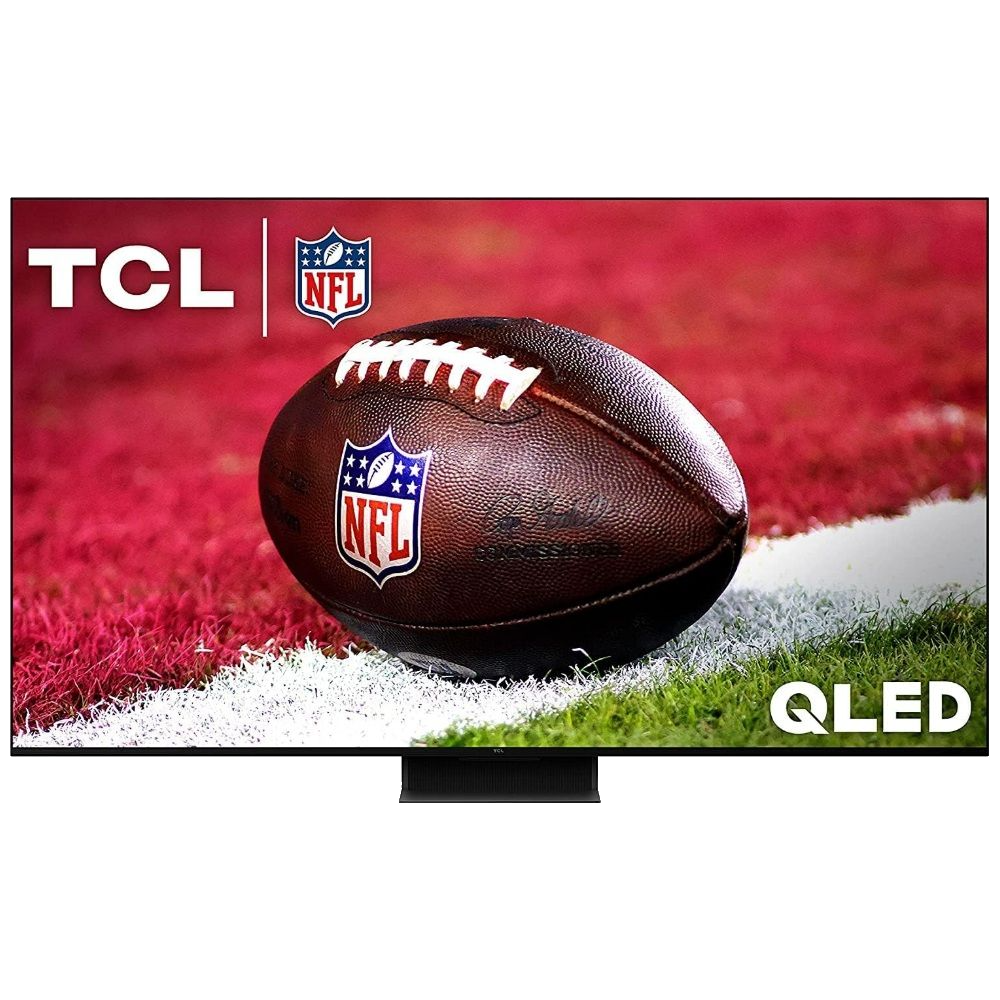

Best LED TV
TCL QM8 QLED TV
Looking for a great QLED TV for gaming? You can’t go wrong with the TCL QM8, a flagship QLED from TCL that features a 144Hz refresh rate, VRR support, low input lag combined with fast response time, and an impressive HDR implementation along with great colors.
$1495 at Amazon See at Best Buy
FAQ
What’s the Difference Between Motion Rate and Refresh Rate?
The refresh rate is the frequency at which your TV or monitor updates the image on the screen. It’s measured in hertz (Hz). A higher refresh rate results in a smoother image and is helpful while gaming. On the other hand, motion rate is a marketing term used by TV manufacturers to tout the image-processing technologies used to improve motion clarity. Unfortunately, as motion rate numbers aren’t standardized, they are of little value.
How Do I Clean My TV Screen Without Damaging It?
You can clean your TV screen using a microfiber cloth. Don’t use abrasive pads, paper towels, or cleaners with alcohol or other chemicals, as they can damage the screen or any coating on it. Instead, spray distilled water on the microfiber cloth to wipe the screen if you have a stubborn stain.
What’s the Difference Between OLED and QLED?
OLED is one of the two primary display technologies used in modern TVs. OLED TVs have self-emissive pixels; thus, they can turn off individual pixels to display inky black colors. On the other hand, QLED is a marketing term used to refer to LCD TVs with quantum dot technology. These TVs use LED or Mini-LED backlighting, so they cannot switch individual pixels off.
Does the Refresh Rate Matter for a TV?
A television’s refresh rate can be significant depending on your use case. For example, if you primarily watch broadcast TV, it doesn’t matter if your TV is 60Hz or 120Hz. But if you play games and want to enjoy the high refresh rates offered by the latest consoles and gaming PCs, a 120Hz TV is more suitable. 120Hz TVs are also better for watching movies as their 24fps can be easily multiplied to match the TV’s refresh rate. 60Hz TV, on the other hand, can sometimes struggle with 24fps content.
What Is HDR?
HDR, or high dynamic range, refers to a TV’s ability to produce a broader range of colors than standard dynamic range or SDR TVs. This expanded range of colors includes brighter whites and darker blacks. As a result, HDR TVs can create pictures that look much closer to reality than SDR TVs. You’ll find multiple HDR formats on the market, including HDR10 , which is a baseline HDR and is available on every single HDR TV. Dolby Vision and HDR10+ are much less widely available.
Also read:
- [New] Expert Tutorials on Precision Digital Video Capture for 2024
- [Updated] Crafting Artful Depth of Field with Modern Tools
- 効率的な動画変換 - H265形式でのエンコードガイド
- A Review Spotlight on Jabra's Speak 25: Fast Charges, Long Talks
- Affordable Dawn Experience: Totobay's Second Gen Wake-Up Light Reviewed for Early Risers Seeking Value
- Best of the Best - Top External BD Drives Reviewed for 202E
- Brand New DBPOWER Peak Pro Review – Reliability, Durability & Value for Price
- Budget Smartphone Showdown: Why the Samsung Galaxy A20 Still Stands Out
- Comprehensive Apple HomePod Mini Analysis: Features on Sound Quality, Smart Assistant Capabilities & Beyond
- Conquering Gaming Challenges with FIFA 19 - The Apex of Sport-Themed Interactive Experiences
- Elevating Audience Excitement with Top Ideas for 2024
- Experience the Quality and Functionality with the Uniden R3 – Top-Tier Long Range Radar Device
- Expert Insights on Digital Gadgets by Tom - Unveiling the Best Tech Tools
- In 2024, Flame the Fire Enhancing Your Snapstreak Game
- New 2024 Approved How To Get More NFL Viewers For Your Sports Live Streaming Channel
- Optimizing User Experience with Single Vs. Multiple Pages
- Top IMEI Unlokers for Your Vivo V30 Phone
- WavePerfect Scan: Steady Hydrophone Functionality
- Why Professionals Are Choosing the DJI Mavic 2 Pro - An In-Depth Reveal and Ranking
- Title: Top-Rated Television Sets : A Buyer's Guide
- Author: Kenneth
- Created at : 2024-12-09 17:08:21
- Updated at : 2024-12-16 16:35:19
- Link: https://buynow-tips.techidaily.com/top-rated-television-sets-a-buyers-guide/
- License: This work is licensed under CC BY-NC-SA 4.0.